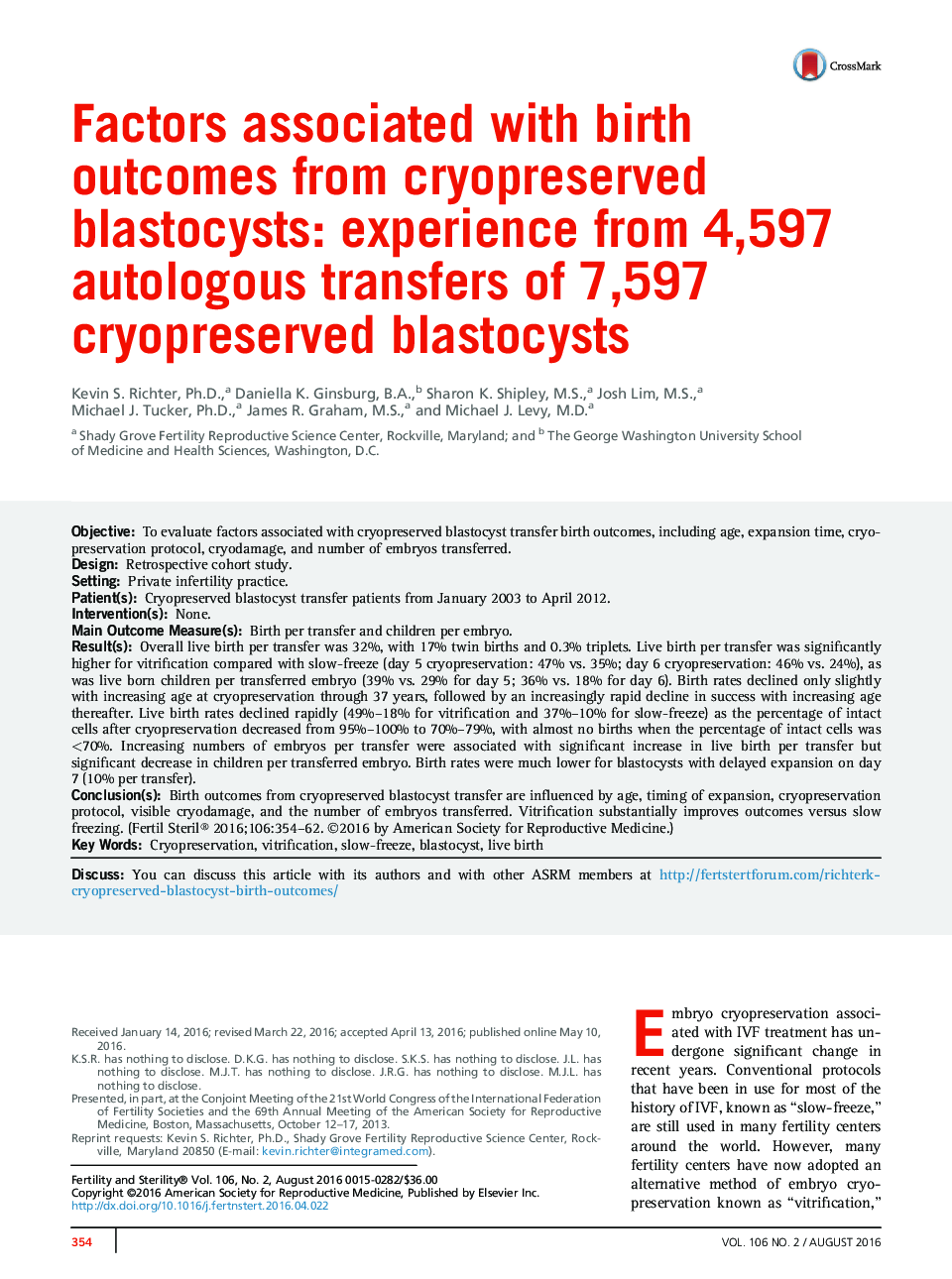| کد مقاله | کد نشریه | سال انتشار | مقاله انگلیسی | نسخه تمام متن |
|---|---|---|---|---|
| 6178363 | 1253255 | 2016 | 11 صفحه PDF | دانلود رایگان |

ObjectiveTo evaluate factors associated with cryopreserved blastocyst transfer birth outcomes, including age, expansion time, cryopreservation protocol, cryodamage, and number of embryos transferred.DesignRetrospective cohort study.SettingPrivate infertility practice.Patient(s)Cryopreserved blastocyst transfer patients from January 2003 to April 2012.Intervention(s)None.Main Outcome Measure(s)Birth per transfer and children per embryo.Result(s)Overall live birth per transfer was 32%, with 17% twin births and 0.3% triplets. Live birth per transfer was significantly higher for vitrification compared with slow-freeze (day 5 cryopreservation: 47% vs. 35%; day 6 cryopreservation: 46% vs. 24%), as was live born children per transferred embryo (39% vs. 29% for day 5; 36% vs. 18% for day 6). Birth rates declined only slightly with increasing age at cryopreservation through 37 years, followed by an increasingly rapid decline in success with increasing age thereafter. Live birth rates declined rapidly (49%-18% for vitrification and 37%-10% for slow-freeze) as the percentage of intact cells after cryopreservation decreased from 95%-100% to 70%-79%, with almost no births when the percentage of intact cells was <70%. Increasing numbers of embryos per transfer were associated with significant increase in live birth per transfer but significant decrease in children per transferred embryo. Birth rates were much lower for blastocysts with delayed expansion on day 7 (10% per transfer).Conclusion(s)Birth outcomes from cryopreserved blastocyst transfer are influenced by age, timing of expansion, cryopreservation protocol, visible cryodamage, and the number of embryos transferred. Vitrification substantially improves outcomes versus slow freezing.
Journal: Fertility and Sterility - Volume 106, Issue 2, August 2016, Pages 354-362.e2